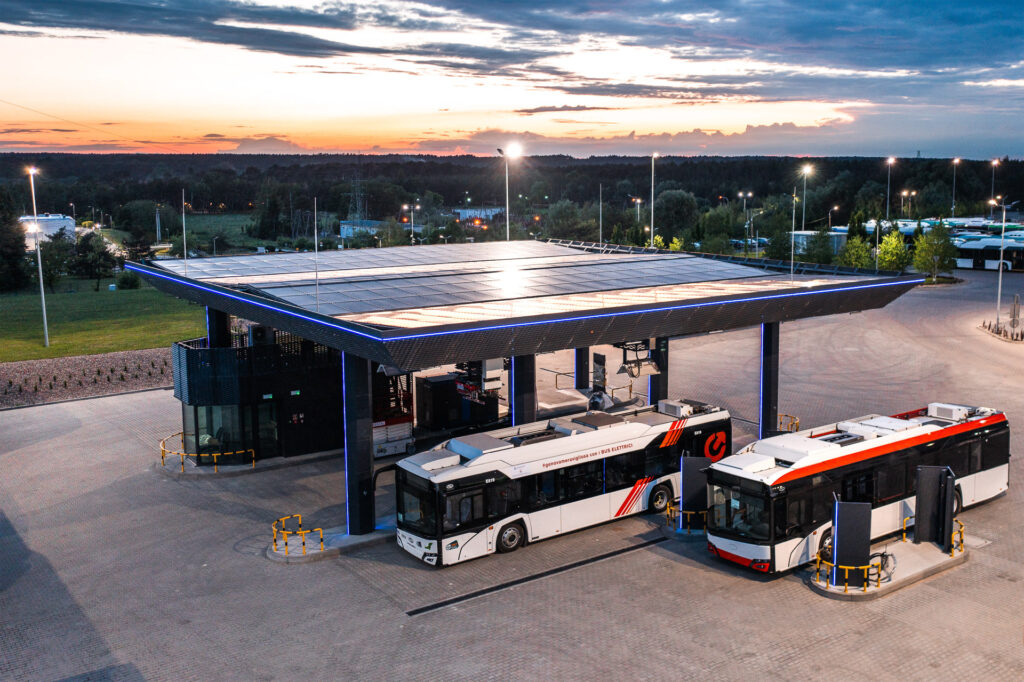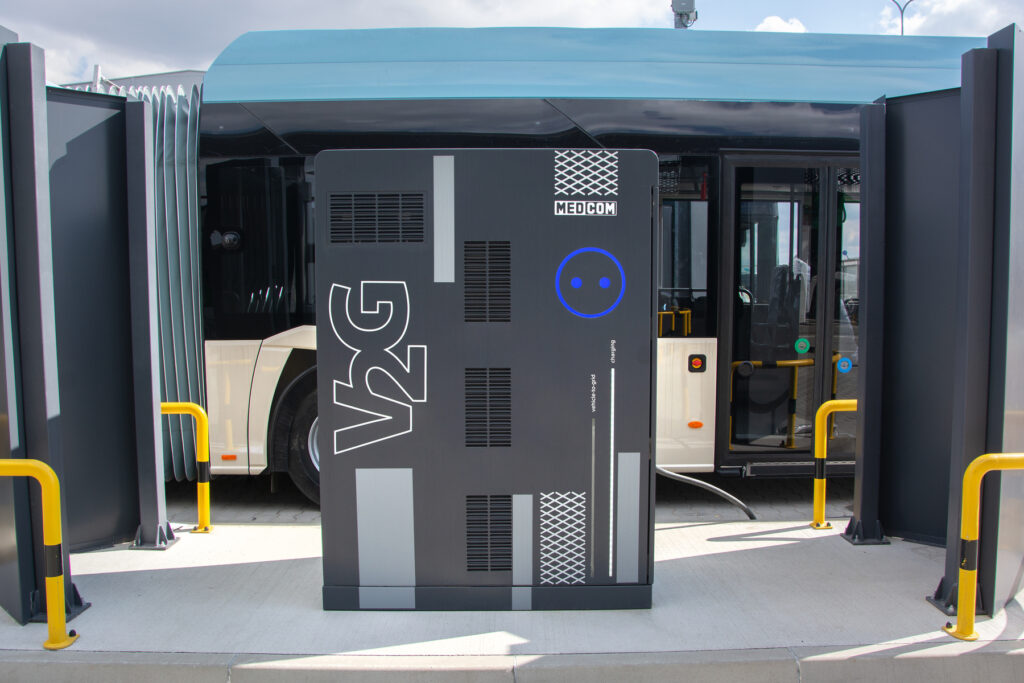In-motion charging (IMC)
In-motion charging (IMC) is another method of charging batteries in city buses. How exactly does it work?

V2G technology
Demand for electricity has risen sharply in recent years, not least as a result of the development of the electromobility sector. Among the many measures to optimise energy consumption, the buzzword ‘V2G’ is becoming increasingly popular. Read this article to find out what it means and how it can apply to a bus factory.
Vehicle to Grid (V2G) is a technology enabling a two-way flow of electricity between a vehicle connected to a charging station and the electricity grid. This functionality makes it possible to implement appealing concepts such as electric powered vehicles acting as mobile energy storage.

What does this mean in practice? The electric vehicle becomes part of the grid, which allows the energy stored in its batteries to be fed back into the grid. V2G therefore enables the energy grid to be balanced, especially if it is based on renewable energy sources. Electric vehicles can be charged at times of high solar activity using photovoltaic panels, or at times of strong winds using wind turbines.
Discharging the vehicles is desirable at times of high electricity demand, such as in the evening. In addition, the vehicle owner can set a minimum recharging threshold to ensure that the necessary range is maintained.
This solution is not only beneficial from the point of view of grid stability, but can even become a source of income for vehicle owners by selling energy back to the grid at peak times through price arbitrage. There are already pilot schemes around the world that allow electric car users to capitalise on this and receive financial rebates not only for reselling energy, but also for guaranteeing its availability at certain times.

There are currently no standardised technical solutions for V2G on the market. To address this, Solaris and its partners have developed a proprietary V2G communication protocol solution based on the widely accepted ISO15118 charging standard. In other words, Solaris vehicles that comply with the standard are additionally equipped with V2G-enhanced functionalities capable of operating with partner chargers that support the communication algorithm. This solution can be used to discharge high power bus batteries – up to 260 kW for plug-in units and up to 600 kW for pantograph units.
An example of this V2G technology application can be found at the Solaris production facility. The state-of-the-art Charging Park, completed in 2022, is fitted with an extensive V2G-compliant charging infrastructure and a system of double-sided photovoltaic panels that cover the entire roof of the facility. The Solaris Charging Park features plug-in chargers with a capacity of 150 kW to 300 kW and pantograph equivalents charging up to 600 kW.
The V2G charger allows energy to be recovered during the process of discharging the electric bus, a routine step in checking the operation of the vehicle. This is because every electric bus produced must be charged and discharged in a certain number of cycles. V2G functionality makes it possible to harvest and reuse the energy from the discharged vehicle.

For more information about the Charging Park, click HERE
The V2G concept can also be used in the process of building smart cities. The creation of smart grids (Smart Grid) increases the security of the electricity system by decentralising it. The mass use of V2G technology would allow the balancing of the entire energy system, for example within a housing estate or even an entire city. This is certainly an important step in the sustainable use of energy.
The implementation of smart grids is also one of the objectives of the EU Directive 2019/944, which addresses the common rules for the internal market in electricity.
The use of electric vehicles as distributed energy storage is still an innovative but well-researched topic. V2G technology is all the more effective the larger the energy storage capacity – and this is certainly the case for the batteries powering electric buses.
In-motion charging (IMC) is another method of charging batteries in city buses. How exactly does it work?
NMC, LFP and LTO are types of batteries, with different chemistries. Learn how each battery types affects vehicle capabilities.
What components is a battery made of? What kind of cell chemistry can it have? What are the key functional parameters? Check it out!